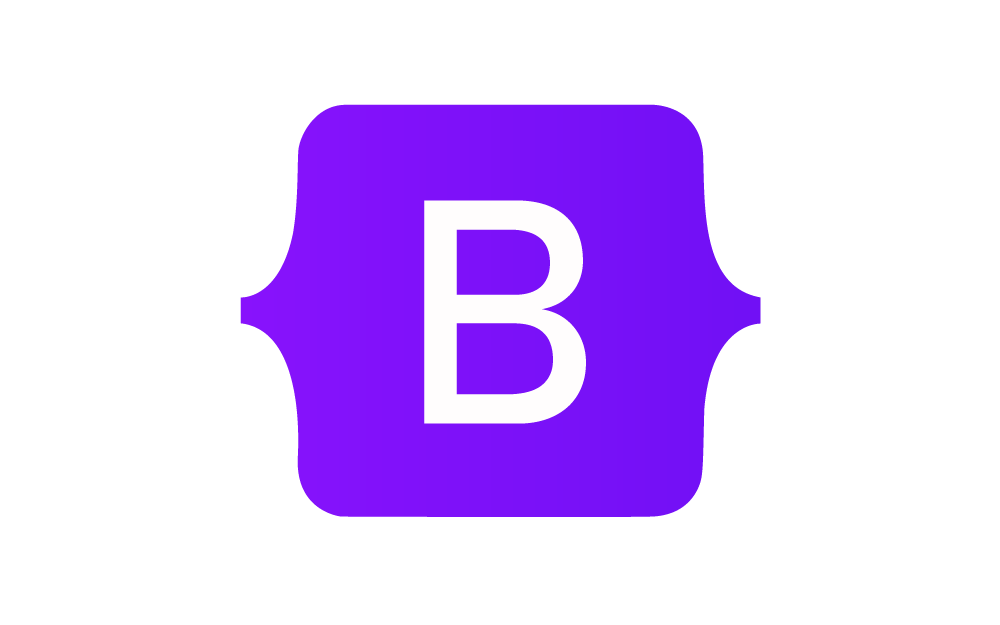Bootstrap - The powerful and versatile framework for modern web projects
Here we would like to give you a comprehensive overview of the popular and versatile framework for web development. Learn how Bootstrap can help you create responsive and functional websites and web applications with minimal effort. Dive into the world of responsive designs, user-friendly components, and streamlined development processes!
What is Bootstrap?
Bootstrap is an open-source framework originally developed by Twitter and now supported and developed by a large community. It was created to help web designers and developers create responsive web projects quickly and easily. Bootstrap is based on HTML, CSS and JavaScript and allows you to develop responsive websites and web applications efficiently and consistently using pre-built components and features.
The framework is known for its mobile-first approach and places great emphasis on the adaptability and usability of websites and applications on different devices and screen sizes. By using Bootstrap, developers can ensure that their projects look and work equally well on smartphones, tablets, and desktop computers.
The advantages of Bootstrap
There are many reasons why Bootstrap is so popular among developers and designers. Here are some of the main advantages that the framework offers:
- Simplicity and speed: Bootstrap allows you to create websites and web applications quickly and easily with its pre-built components and features. You can directly integrate the framework into your project and start working right away.
- ResponsiveDesign: Bootstrap is specifically designed to facilitate the creation of responsive websites and applications. By using flexible layouts, grids and media queries, your design will automatically adapt to different screen sizes and devices.
- Customizability: Bootstrap is a very flexible framework that can be easily adapted to your individual needs and requirements. You can add, remove or modify components to create a unique and customized design.
- Usability: Bootstrap places great emphasis on usability and offers a variety of user-friendly components, such as navigation bars, forms, and buttons that enhance the user experience.
- Large community and resources: since Bootstrap is an open source project, it benefits from a large and dedicated community that is constantly developing new features, plugins and extensions. There is also a wealth of online resources, such as documentation, tutorials and examples to help you learn and use Bootstrap.
- Compatibility: Bootstrap is compatible with all modern browsers, ensuring a consistent and hassle-free experience for all users, regardless of their preferred browser.
- Continuous development: Bootstrap is continuously developed and improved to meet the ever-changing needs of web development. The regular updates and new versions guarantee that the framework always stays on the cutting edge of technology.

Bootstrap components and functions
Bootstrap components and functions
Bootstrap offers a variety of pre-built components and features that you can use in your web projects. Some of the most important ones are:
Layouts and grid system: Bootstrap has a flexible and customizable grid system that makes it easy to create responsive layouts. You can use the grid system to easily arrange content and elements on your page to fit different screen sizes.
Typography and fonts: Bootstrap provides a set of predefined fonts, font sizes, and typography options to help you create a consistent and responsive design.
Navigation bars and menus: The framework includes pre-built navigation bars and menu components that you can easily customize and integrate into your project.
Buttons and forms: Bootstrap provides a wide range of buttons and form elements that are both functional and visually appealing.
Cards, Tables, and Lists: Bootstrap lets you easily and quickly create cards, tables, and lists that are suitable for a variety of use cases.
Modals, tooltips, and popovers: the framework provides several ways to display additional information or actions in the form of modals, tooltips, and popovers.
Icons and Glyphs: Bootstrap includes an extensive collection of icons and glyphs that you can use to visually enhance your website or application.
JavaScript plugins
: Bootstrap comes with a variety of JavaScript plugins to help you integrate interactive and dynamic elements into your projects, such as carousels, dropdown menus, and more.
Possible uses of Bootstrap
Possible uses of Bootstrap
Bootstrap can be used for a variety of web projects, including but not limited to:
Corporate websites: Bootstrap is ideal for creating professional and responsive corporate websites that work well on a variety of devices and screen sizes.
E-commerce platforms: Bootstrap allows you to easily and quickly develop online stores and e-commerce platforms that are both user-friendly and visually appealing.
Web applications: The framework is great for developing web applications, such as dashboards, content management systems, and project management tools.
Portfolio Websites: Bootstrap is a great option for creatives and freelancers who want to create a responsive and functional portfolio website to showcase their work and services.
Blogs andonlinemagazines: the framework offers a variety of components and features that are ideal for creating blogs and online magazines.
Landing pages and marketing campaigns: Bootstrap can be used to create responsive and effective landing pages for marketing campaigns, tailored to different devices and screen sizes.
Bootstrap customization and extension
Bootstrap customization and extension
One of the biggest strengths of Bootstrap is its customizability and extensibility. You can easily customize the framework to your individual needs and requirements, and extend it with additional plugins and extensions to add more features.
To customize Bootstrap, you can edit the provided CSS and JavaScript files or add your own styles and scripts. You can also modify the pre-built components and features to create a unique and customized design. Another way to customize Bootstrap is to use the pre-built themes and templates developed by the community or create your own themes.
Bootstrap can also be extended with a variety of plugins and extensions developed by the community. These plugins provide additional functionality and components beyond the standard features of the framework. Some examples of popular Bootstrap extensions are:
Lightbox galleries: Add engaging and user-friendly image and video galleries to your web projects.
Date and time pickers: integrate handy date and time pickers into your forms to enhance user experience.
Parallax scrolling: Create visually appealing parallax scrolling effects to make your website more dynamic and interesting.
Sliders and carousels: Use various slider and carousel plugins to present engaging and interactive content on your page.
Notifications and Alerts: Improve user experience by integrating custom notifications and alerts into your projects.
Bootstrap offers a variety of pre-built components and features that you can use in your web projects. Some of the most important ones are:
Layouts and grid system: Bootstrap has a flexible and customizable grid system that makes it easy to create responsive layouts. You can use the grid system to easily arrange content and elements on your page to fit different screen sizes.
Typography and fonts: Bootstrap provides a set of predefined fonts, font sizes, and typography options to help you create a consistent and responsive design.
Navigation bars and menus: The framework includes pre-built navigation bars and menu components that you can easily customize and integrate into your project.
Buttons and forms: Bootstrap provides a wide range of buttons and form elements that are both functional and visually appealing.
Cards, Tables, and Lists: Bootstrap lets you easily and quickly create cards, tables, and lists that are suitable for a variety of use cases.
Modals, tooltips, and popovers: the framework provides several ways to display additional information or actions in the form of modals, tooltips, and popovers.
Icons and Glyphs: Bootstrap includes an extensive collection of icons and glyphs that you can use to visually enhance your website or application.
JavaScript plugins
: Bootstrap comes with a variety of JavaScript plugins to help you integrate interactive and dynamic elements into your projects, such as carousels, dropdown menus, and more.
Bootstrap can be used for a variety of web projects, including but not limited to:
Corporate websites: Bootstrap is ideal for creating professional and responsive corporate websites that work well on a variety of devices and screen sizes.
E-commerce platforms: Bootstrap allows you to easily and quickly develop online stores and e-commerce platforms that are both user-friendly and visually appealing.
Web applications: The framework is great for developing web applications, such as dashboards, content management systems, and project management tools.
Portfolio Websites: Bootstrap is a great option for creatives and freelancers who want to create a responsive and functional portfolio website to showcase their work and services.
Blogs andonlinemagazines: the framework offers a variety of components and features that are ideal for creating blogs and online magazines.
Landing pages and marketing campaigns: Bootstrap can be used to create responsive and effective landing pages for marketing campaigns, tailored to different devices and screen sizes.
One of the biggest strengths of Bootstrap is its customizability and extensibility. You can easily customize the framework to your individual needs and requirements, and extend it with additional plugins and extensions to add more features.
To customize Bootstrap, you can edit the provided CSS and JavaScript files or add your own styles and scripts. You can also modify the pre-built components and features to create a unique and customized design. Another way to customize Bootstrap is to use the pre-built themes and templates developed by the community or create your own themes.
Bootstrap can also be extended with a variety of plugins and extensions developed by the community. These plugins provide additional functionality and components beyond the standard features of the framework. Some examples of popular Bootstrap extensions are:
Lightbox galleries: Add engaging and user-friendly image and video galleries to your web projects.
Date and time pickers: integrate handy date and time pickers into your forms to enhance user experience.
Parallax scrolling: Create visually appealing parallax scrolling effects to make your website more dynamic and interesting.
Sliders and carousels: Use various slider and carousel plugins to present engaging and interactive content on your page.
Notifications and Alerts: Improve user experience by integrating custom notifications and alerts into your projects.
Bootstrap is a powerful and versatile framework that helps you create responsive and functional web projects with minimal effort. With its wide range of components, features and extensions, it's ideal for developers and designers who want to work quickly and efficiently.
